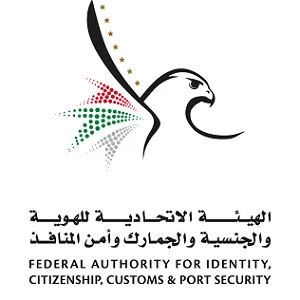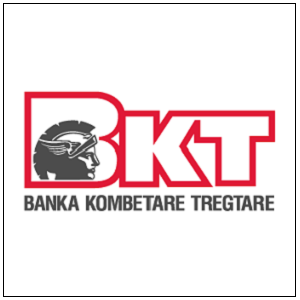Business
Turning Your Passion for Pets into a Profitable Business

- The UK pet industry provides good openings for entrepreneurs in fields such as grooming, products, and pet care services.
- Pet businesses can thrive in this fast-growing sector when tapping a passion for pets with effective marketing.
If your heart is set on an animal-related business, there are various avenues, many of which are low-cost and can be accomplished from home. Pet life is in full bloom, with people treating their pets more like family than ever, thus making this an opportune time to start catering to this need. Following are some considerations regarding the kind of businesses that will help animals and help spark your creativity.
1. Homemade Pet Treats
This pet treat business not only offers to fill your passion for animals, but it will also help you achieve your entrepreneurial goals. For health-conscious pet owners, you might make a healthy pet treat right in your kitchen. You might begin with easy treats like peanut butter biscuits or sweet potato chews and progress to more complex ones. You would need to examine local food safety regulations and secure any required permissions. Packaging design must also be done professionally. Your products could be sold at local pet shops or farmers’ markets and online. Getting friendly with local veterinarians always will help in getting feedback and subsequently generate opportunities for wholesale deals.
2. Pet Services
Pet owners wonder about trustworthy people to care for their pets when they are too busy with their hectic schedules. This service entails caring for a pet in the owner’s home, which includes feeding, walking, medication delivery, and grooming. When starting, it is vital to have insurance, contracts describing the scope of the services you plan to provide, and emergency plans. To expand a clientele, booking systems should be set up, and personalized care that pet owners can have faith in is to be delivered.
3. Pet Social Media Management
Pet businesses need a strong social media strategy that resonates with animal lovers. As a pet social media manager, you will provide interesting content, build content calendars, and use your understanding of pet trends to help businesses flourish. Portfolios that demonstrate how you’ve worked with pet-related companies are essential for obtaining clients. Understanding the nitty-gritty of pet culture and audience interaction can help you stand out in this niche industry.
4. Pet Product Review Blog
A pet product review blog is one way to combine a passion for pets with a potential income. This can include testing and reviewing things such as pet food, toys, and accessories for the benefit of other pet owners. Here, credibility is the key, so let your reviews be open and substantiated by evidence: photos, descriptions, and so on.
5. Online Pet Boutique
An online pet boutique allows one to curate a selection of products designed to meet specific pet requirements. Whether it is a choice of accessories or health products for pets, quality and safety will have to be ensured. Running a proper online pet boutique will mean building great supplier relationships, writing good product descriptions, and providing customers with smooth shopping experiences.
7. Pet Photography Business
Pet photography can be a lucrative business for people who enjoy both photography and animals. Capturing the personality of pets while managing unpredictable subjects requires a mix of technical skills and an understanding of animal behaviour. The development of a unique style along with services offered for special occasions such as birthdays or holidays will enhance the chances of success for your business.
8. Pet Parent Education Platform
With experience in the pet care industry, you could create an online platform dedicated purely to educating pet owners. Everything from basic health monitoring to preventive care courses could be designed in a way that would impart useful knowledge to pet parents. Engaging, easy-to-understand content, featuring lots of visual demonstrations and deliverable action tips, will secure you a good base of loyal followers.
9. Pet Supply Subscription Service
Subscription boxes are a mainstay benefitting pet businesses everywhere and that field in particular. Offering a monthly service that sends toys, treats, and accessories designed to cater to pets’ needs can be an excellent recurring revenue model. Researching pet preferences will lead to your adoption of quality, safe products that will create a considerable amount of goodwill for your pet supply subscription service.
10. Pet Transport Coordination
A lucrative business idea is to work on organising pet transportation throughout town or across the planet. Then, there is handling the logistics, booking the certified carriers, and getting the paperwork in order. This means health checks at the veterinarian, health certificates according to each airline, and plenty of other hurdles. Pet carriers wouldn’t get enough care. So a pet lover knows that he has to ensure these issues are well taken care of.
11. Pet Walking Service Platform
A wholly different side of animal control needs is being turned into an effort to manage a pet walking service. So, benefits for the walkers, for instance, could include setting up a network of professional walkers and developing strong systems for scheduling, GPS tracking, and client safety. The platform might also help link walkers with pet owners in the context of an increasing demand for trustworthy care. Training is essential for learning how the dog acts and improving the overall experience.
The Growing UK Pet Market
The UK pet business is expanding quickly, with more and more households owning pets. With about 50per cent of UK households owning at least one pet, spending on pet-related products and services has surged. This means a great opportunity for animal-loving entrepreneurs.
The market consists of different sectors: pet food, grooming and training, and even pet-friendly travel. Customers are willing to pay top dollar for premium products and services that will make sure their pets are happy and healthy. From custom-designed pet accessories to grooming on wheels, the businesses that adapt to this demand and cater to it will flourish.
Conclusion
The pet industry is one of the fastest-growing ever in the UK, and love for animals can turn into a practically endless array of good business opportunities. There are so many facets of opportunity: from pet grooming to online boutiques to pet consulting. Just go to the intersection of love for dogs and the business side of things, and marketing, and voila—you’ve got yourself a niche most likely to thrive in this ever-expanding market.














































